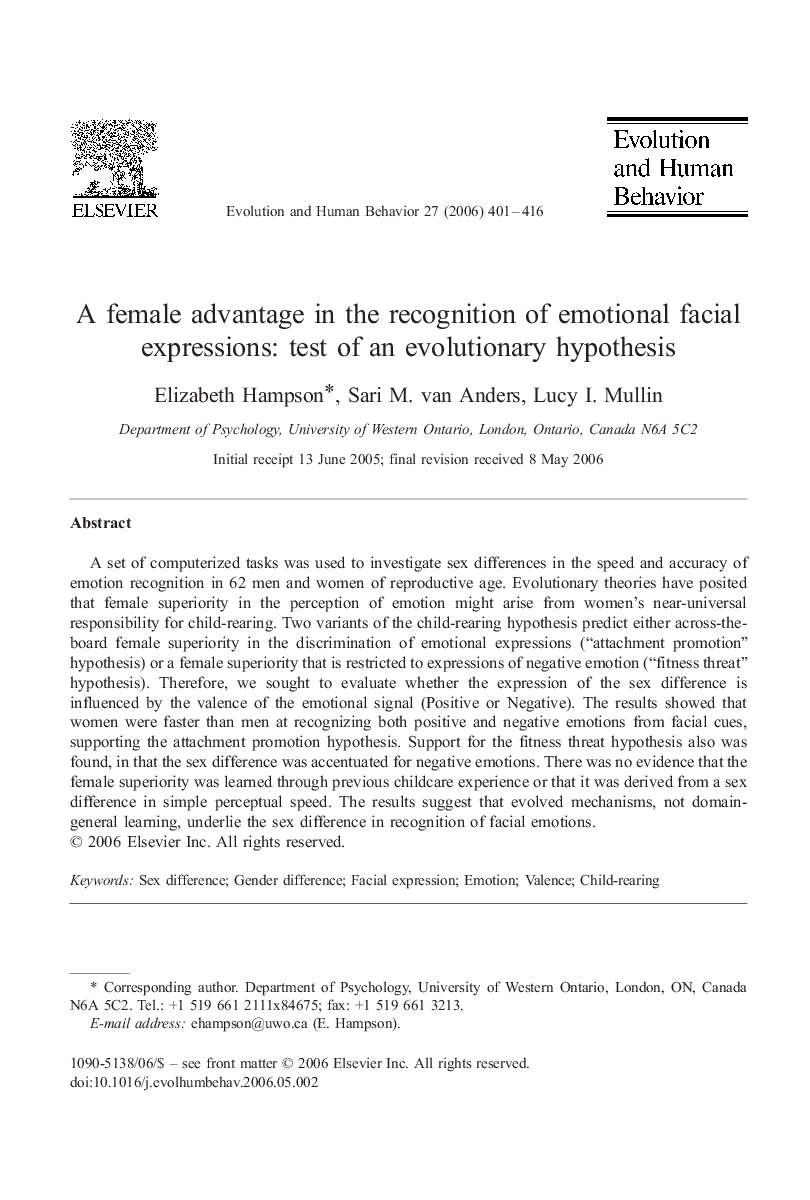| Article ID | Journal | Published Year | Pages | File Type |
|---|---|---|---|---|
| 943603 | Evolution and Human Behavior | 2006 | 16 Pages |
A set of computerized tasks was used to investigate sex differences in the speed and accuracy of emotion recognition in 62 men and women of reproductive age. Evolutionary theories have posited that female superiority in the perception of emotion might arise from women's near-universal responsibility for child-rearing. Two variants of the child-rearing hypothesis predict either across-the-board female superiority in the discrimination of emotional expressions (“attachment promotion” hypothesis) or a female superiority that is restricted to expressions of negative emotion (“fitness threat” hypothesis). Therefore, we sought to evaluate whether the expression of the sex difference is influenced by the valence of the emotional signal (Positive or Negative). The results showed that women were faster than men at recognizing both positive and negative emotions from facial cues, supporting the attachment promotion hypothesis. Support for the fitness threat hypothesis also was found, in that the sex difference was accentuated for negative emotions. There was no evidence that the female superiority was learned through previous childcare experience or that it was derived from a sex difference in simple perceptual speed. The results suggest that evolved mechanisms, not domain-general learning, underlie the sex difference in recognition of facial emotions.
